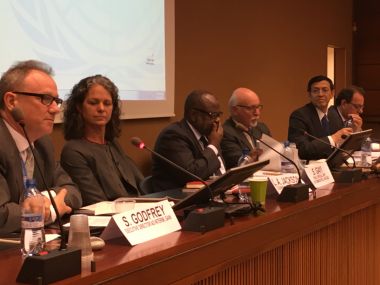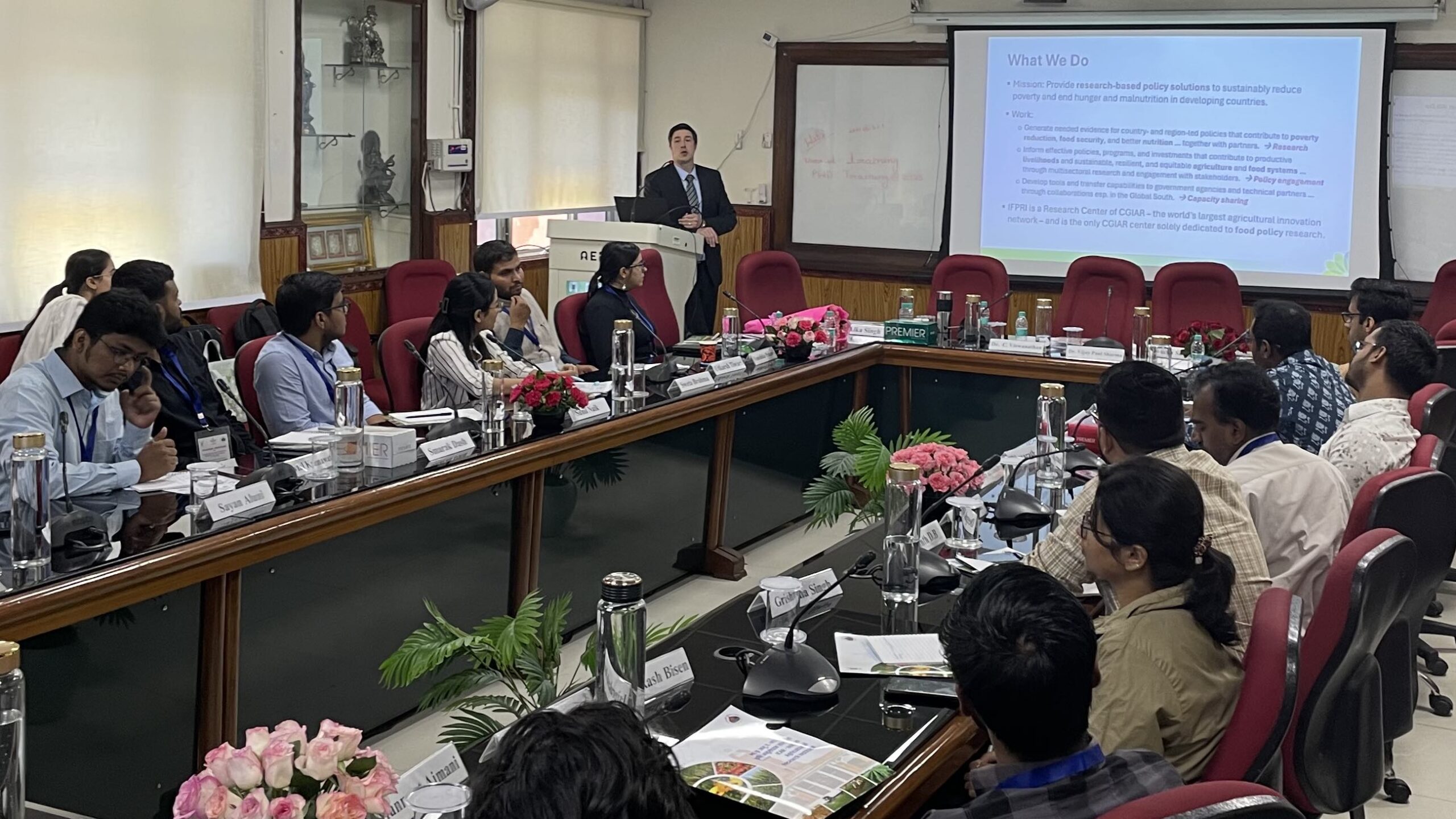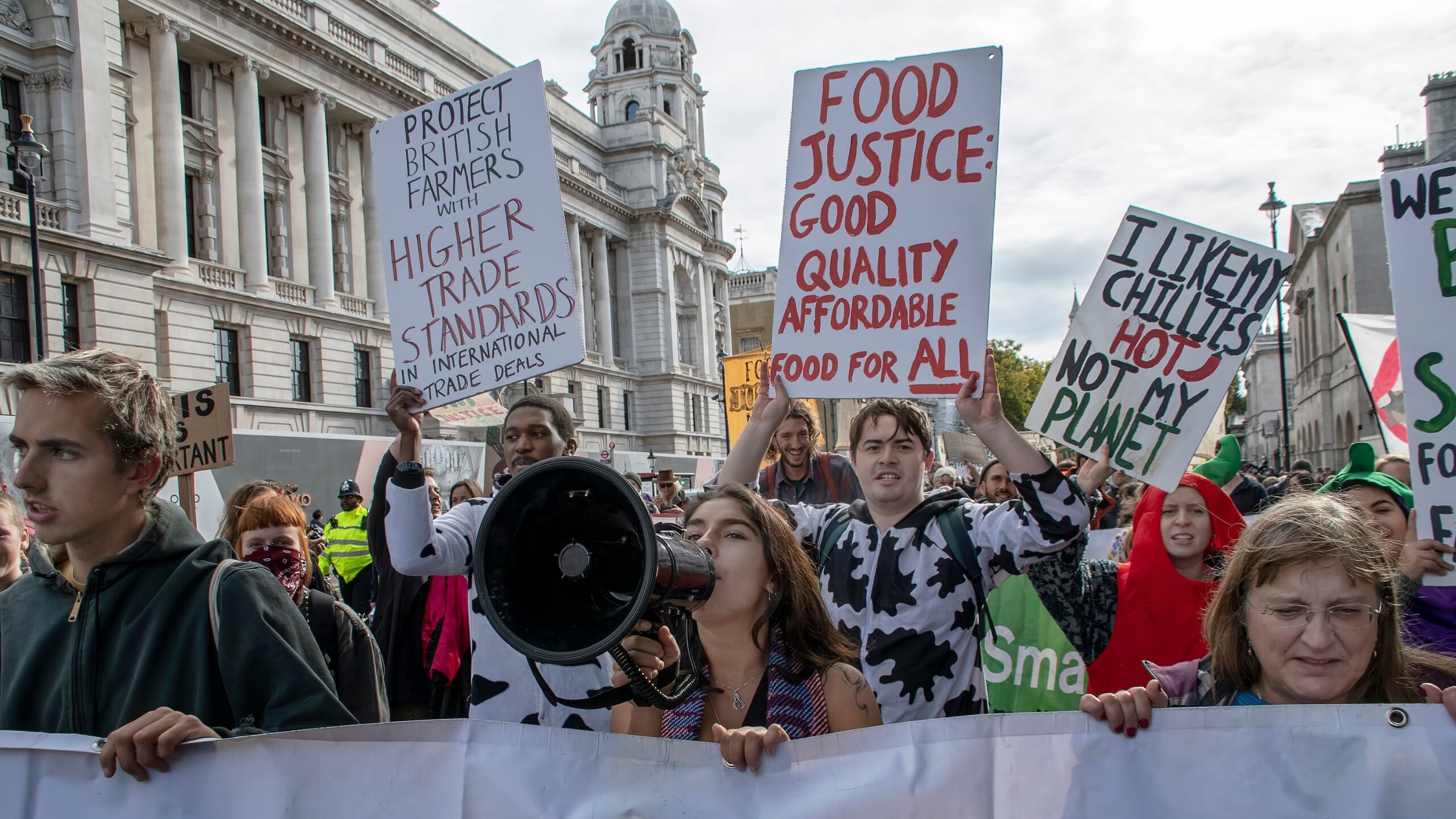Earlier this month, I had the privilege of acting as a discussant at the Geneva launch of IFPRI’s 2016 Global Food Policy Report. The focus of this year’s report is on food systems in the context of the international community’s new commitments on sustainable development and climate change. IFPRI’s report is a great analytical contribution, backed up by first-hand modelling and monitoring of factors and trends determining the possibilities of food security and nutrition in the world of today, and emphasizing what might need to be done to achieve the UN Sustainable Development Goals (SDGs) ahead of the 2030 deadline.
SDG 2 calls for an eradication of hunger and malnutrition by 2030, but food is also relevant to a number of other goals, such as those on poverty, climate change, and sustainable consumption and production. IFPRI’s report notes that a reshaping of the world’s food system will be needed in this context. 795 million people still remain undernourished and some 162 million children under the age of five are affected by stunting despite significant progress over the past few decades in accordance with the Millennium Development Goal of halving the number of hungry in the world between 1990 and 2015. At the same time, nearly two billion people are considered overweight or obese, with this phenomenon increasingly linked to malnutrition. Meanwhile, the pressures of localized population growth, urbanization and revenue-induced dietary alterations, and climate change, imply the need for an increasingly efficient food system that is also climate-smart, water and resource-efficient, inclusive, and business-friendly.
In a globalized economy of broad heterogeneity with respect to agro-ecological endowments and technological and institutional capabilities between nations, movement of food and food products and inputs across borders is imperative in addressing hunger and nutrition objectives. Indeed, trade and investment are identified in the 2030 Agenda as a means to achieve SDG 2, with calls for increased, targeted investments in the sector, along with the correction and prevention of trade restrictions in global agricultural markets, such as through the elimination of agricultural export subsidies, and the need for measures to ensure the proper functioning of food commodity markets. The WTO’s Tenth Ministerial Conference (MC10) held in Nairobi last December resulted in a commitment to end agricultural export subsidies. Although this step alone is insufficient, it represents an important step forward.
The current global food system involves a range of actors, inputs, processes, rules, and knowledge. At the International Centre for Trade and Sustainable Development (ICTSD), we’ve monitored how the rise and spread of international production networks (most commonly dealt under the rubric global value chains)– driven by major technological changes, advances in transport and logistics, and the further and continuous integration of developing economies into global markets–has transformed the operation of many sectors, including food supply. Among factors affecting the operation of food value chains are transport and storage services, cold chains and their management, as well as a myriad of health and safety and product standards and certification. Requirements around product specifications impact market access and sourcing possibilities and decisions. These include industry-wide standards of compliance for agricultural practices or goods that affect large number of suppliers and may be difficult for small- and-medium sized enterprises in developing countries. These actors also may find it difficult to meet a burgeoning array of different standards. Access to capital markets to raise funds for investments in long-term productivity enhancements, adaptation and mitigation to climate change, as well as risk management schemes among other things, and a lack of physical infrastructure, are also major concerns for entrepreneurs and economic actors.
In this context, building a more inclusive, efficient, and sustainable global system makes it imperative to look at policies across the entire food chain. Chapter six of IFPRI’s report suggests doing exactly that in order to identify ways to improve nutrition and environmental outcomes. It also acknowledges that further work is required to pinpoint constraints to improved nutrition and sustainability along the food value chain.
Several policy options have been identified through the E15Initiative, a joint project led by ICTSD and the World Economic Forum (WEF) focused on the future of the global trade and investment system, which could stimulate updating of policy-making to best move food from farm to fork. Regional trade facilitation plans for agriculture and fisheries for example, could focus on the development of databases and data exchanges of products, the formulation of common import and export permits, mutual recognition for standards on traded goods, explore linkages with certification bodies, sanitary inspection facilitation, and institutional. The plans could also identify and plug gaps in regional infrastructure and set up trade, processing, distribution and retailing financing schemes. This would complement and go beyond the WTO’s pending Trade Facilitation Agreement that should, once ratified, help to streamline customs procedures generally and reduce trade costs.
E15Initiative experts also point out that farmers and the food industry do not just need reductions in tariff barriers in order to raise productivity and integrate into global markets. They also need technology, up-to-date market information, knowledge, finance, seeds, pesticides and fertilizers, services-related to agriculture and fisheries, clear signals on standards and enhanced processing, and manufacturing capacity. Trade and investment policy and frameworks on goods, services, digital economy, technology, and investment are part of the food security and nutrition puzzle.
What if policymakers approached both tariff and non-tariff barriers to agriculture, fisheries and food trade, as well as relevant services in an integrated manner, under an agri-food value chain approach? Doing so could also offer a broader range of options for countries to find trade-offs in the negotiations. Negotiating in clusters has not yet been attempted at a significant scale yet at the WTO or other negotiating forums. Perhaps the global community’s clear and ambitious pledge to end hunger and malnutrition could provide common cause to adopt such an approach, however, while also adapting and updating global trade and investment governance to a world characterized by a rapidly evolving globalized economy, changes in business models and pressing environmental and demographic challenges.
Ricardo Meléndez-Ortiz is co-founder and Chief Executive at the International Centre for Trade and Sustainable Development (ICTSD), and a former delegate of Colombia for trade, investment, environment and development negotiations. Since 1997, the publisher of BRIDGES and its sister periodicals, and currently principal convener of the E15Initiative, a major joint undertaking with the World Economic Forum, working with over 370 experts to devise and propose options on the immediate futures of the global trade and investment system.







